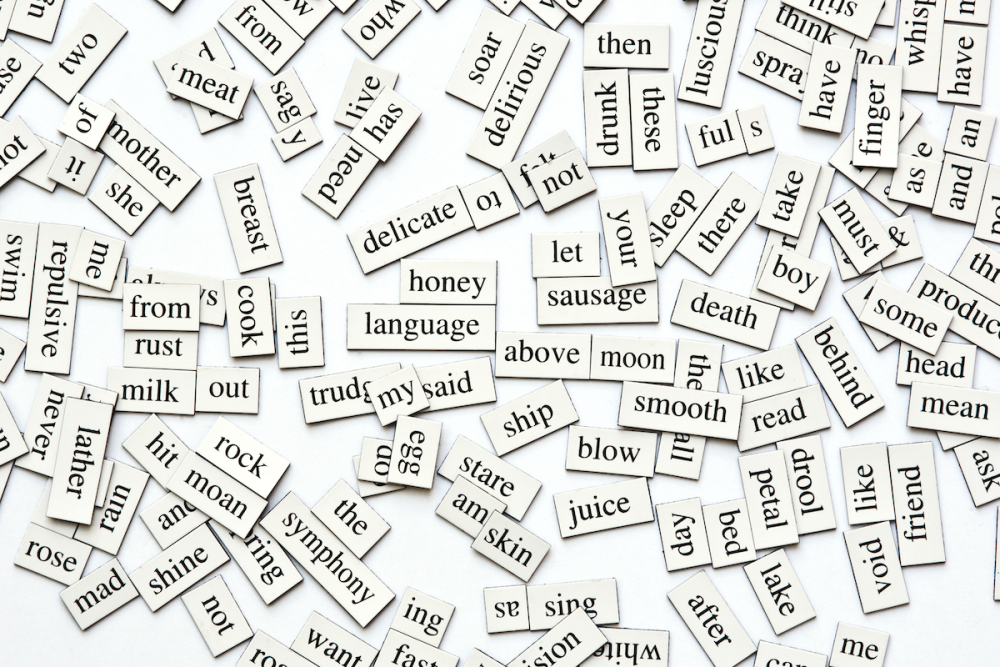
Today’s post is by writer and writing coach Daphne Gray-Grant (@pubcoach).
When I opened the just-edited manuscript of my first book, some 12 years ago, I gasped.
My editor had covered it in so many red marks, it looked as though she might have accidentally stabbed herself with an X-Acto knife.
Worse, I was totally unprepared. I’d spent my entire working life as an editor—first at a community weekly newspaper, then at a large metropolitan daily, then a brief stint as a book editor, finally as a freelance writer and editor. I thought I knew how to edit. Even myself.
Perhaps more persuasively, I’d also had a dozen beta readers—many of them professional writers—comb through the manuscript to critique, question, and eviscerate my words. My manuscript was definitely in the best possible shape it could have been.
How was it possible that this editor found so many fresh problems? Did she really know what she was doing?
Turns out, of course, that she did. As soon as I’d calmed down and gone through her comments, one by one, I could see they made sense. And, besides, I knew her to be not just a superb editor, but a wise and well-informed person.
But having a strong, gut-punch reaction to being edited is part of the cost of doing business when writing. You’ve poured your heart into your words. In fact, you’ve anguished over every damn one of them. It’s hard to hear that your manuscript, your child, has an ugly nose.
If you are going to be facing an editor’s red pen, here is my advice on how to survive the process:
If you can choose your own editor, choose carefully.
Approach the job as if you were hiring a contractor for your much-loved house. Find someone who specializes in your genre. Talk to at least three different editors who might suit. Make sure you actually like them, as well as trust their abilities. Get three references from each and don’t think holding the references in your hands is enough—check them all, thoroughly. Ask questions not just about the quality of these editors’ work but also ask about what they were like to work with. If the editor sounds promising, request a test edit (of about 750 to 1,000 words of text), even if you have to pay for it, so you can see what you think of the editor’s work. If you like it, then agree upon cost and a deadline and sign a contract.
Don’t rush your hiring process or make it slapdash. Take your time and do it right.
Be prepared for a lot of red ink.
Somehow, anticipating lots of red ink—rather than the blissfully color-free pages I had expected—will make the inevitable result easier to bear. And if you find red ink offensive (as many people do), ask your editor to use green, blue or purple for their comments instead. And if they resist, which I would consider a terrible sign, hire someone else.
Take it slow.
Give yourself at least a full day to do nothing more than glance at the volume of comments and steel yourself. There is no need for you to respond to edits at the speed of light. Take your time and get your feelings in the right place first. Do some deep breathing.
Remind yourself the editor is there to help you. Understandably, it’s going to feel as though the editor is doing nothing but criticizing you. But in fact, any editor is really in loco lectorem—Latin for “in the position of a reader.” Consider your editor to be your partner, there to help protect your published work from mistakes and misunderstandings. What can be worse than an editor who points out too many mistakes? Easy! A published work with mistakes.
Do the simple edits first and fast.
If you’ve ever written an SAT, you’ll know that you should answer multiple choice quizzes fast and skip questions you can’t answer easily, returning to them at the end. Regard your manuscript as the biggest SAT in your life. Go through the edits with speed and deal with the ones that won’t cause you to sweat. Misspelled word? Spell it right. Unclear antecedent? Make it clear. Sentence fragment? Add the part of speech that’s missing.
Do the harder, more challenging edits, next.
Always, for every writer—including famous ones like Neil Gaiman and Margaret Atwood—there will be some edits that seem unbearably difficult. You may even agree with the editor’s concern, but you don’t have a clue how to fix the problem. Here is where you need to think—deeply—about what to do. I suggest getting away from your desk to do this because our brains operate better when we’re moving. Take a walk or go for a run (or do some gardening or house-cleaning) and ponder the question. And if that doesn’t give you an answer, then talk about the issue with someone else. Consider chatting with a writing buddy. Or pick up the phone and speak with your editor. The editor is not God. She or he is a human being who probably has some useful thoughts about your conundrum.
Don’t feel you have to accept every edit.
Sometimes, you won’t agree with the editor’s concern and you’ll feel it impinges on what you want to accomplish. If the editor is someone you’ve hired yourself for, say, a self-publishing project, take her or his advice carefully, but know that you have every right to refuse certain pieces of it. (If the editor is with a traditional publishing house, you’ll have a harder time ignoring their advice, but at least have a conversation with them so you can understand why they’ve suggested what they have.)
Bonus tip
If your editor has used “track changes” and if they are someone whose judgment you trust implicitly, consider hitting the “accept all” key, then reading through only the corrected manuscript to ensure all is okay with you. In this manner, the edits won’t traumatize you, but you can still accept the benefit of the editor’s knowledge. Just remember that this maneuver won’t delete their comments, so you will still need to deal with those.
And whatever else you do, remember that your writing project, no matter how important, is rarely a life-and-death endeavor. Be sure to laugh at yourself from time to time. As T.S. Eliot said, “Some editors are failed writers, but so are most writers.”

Daphne Gray-Grant is principal at The Publication Coach, a website and coaching group for writers and editors and author of the book Your Happy First Draft. She has just released an online, two-hour course on how to hire an editor.

An excellent and timely post for me. Thank you.
The choice of editor is an important one. I’ve worked with several and the first criteria needs to be based on the kind of manuscript you have. Don’t choose a nonfiction editor for fiction, for example. Many (not all) NF editors look for clarity and often don’t have a feel for literary techniques. For example, one chapter began with the personification metaphor: “The sun had been trying to peer through the window but was frustrated until a helpful breeze started playing with the curtains.” One editor (clearly nonfiction) told me the sun couldn’t be frustrated. It was a test sample, and I quickly moved on to a different editor. The, as the article says, look for genre. I’ve been working with an editor who is also a writer now, and it’s worked out well. Since he’s in England, I also get a slightly different perspective on style, and I find I prefer some of the English (British) practices.
excellent points. Each and every one is exactly spot on. I’d add to try to get into the mindet (and it’s hard) that your manuscript is not you- your editor is not attacking/criticizing YOU, but your creative work. And they are doing so in the spirit of making the final product even better. Look at her/him as a partner in the process and that you have a single goal-producing a book readers will love. There’s nothing worse that publishing a book you know you could have made better (and that usually means deeper) if you had taken the time
Needed to see this today. Have wanted to throw in the towel for the past few weeks. Thank you!
Yes, yes, yes. I want to send a copy of this blog with every edit I return to authors.
Thanks for a reassuring and constructive article! I also always ask my editor to tell me what works well. I believe we underestimate positive feedback.
Great advice. I’m a ghostwriter and often have to help my clients navigate this moment when they get their first round of edits from their publisher, so these tips are helpful. One thing I’d add to your final “Bonus Tip”–you don’t even have to go as far as accepting all changes. Word has a feature that a lot of people miss where if you click the little horizontal line to the left of a paragraph featuring changes, all tracking will be hidden and you’ll be viewing the “final” manuscript as if all changes had been accepted. This can be reassuring for people to know that they can toggle between views.
Oh my goodness, don’t simply accept all the tracked changes! That’ll create a nightmare for your editor. To do cleanup on a manuscript, the editor needs to see her suggested changes plus your responses in tracking. As Ellen said, you can tweak your Word settings to either display or hide the tracking. It may be easier to make your revisions with the tracking temporarily hidden, so you see what the text would look like if all the edits were accepted. But you shouldn’t remove it.
Thanks for the kind words, everyone! And special thanks to Ellen for her great tip about the hidden feature in Word!
These are excellent suggestions that will be helpful to many authors, in my opinion.
The colors of tracked changes in your manuscript are stored locally in your computer and Word software, not in the file itself. The colors your editor uses are almost certainly different from the default colors you’re seeing. If you don’t want to see changes in red, set Word on your computer to show them in the color you prefer.
I’m not sure how Jane feels about sharing links in the comments, but you can get instructions on how to do this in The Writer’s Guide to Track Changes in the Free Resources tab of my website, which is my full name dot com. Happy tracking!